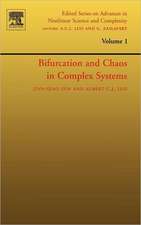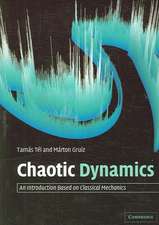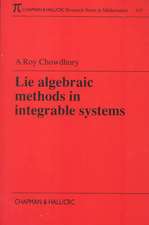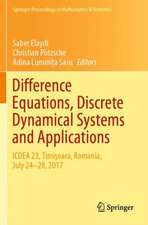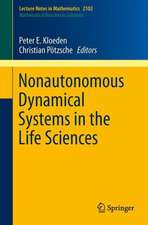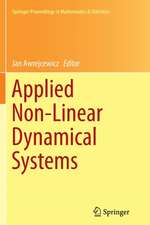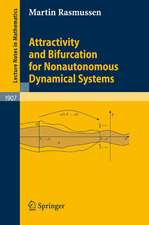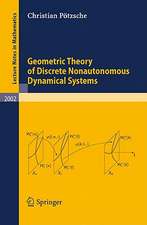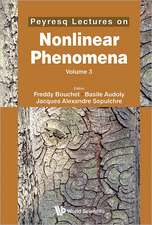Nonautonomous Bifurcation Theory: Concepts and Tools: Frontiers in Applied Dynamical Systems: Reviews and Tutorials, cartea 10
Autor Vasso Anagnostopoulou, Christian Pötzsche, Martin Rasmussenen Limba Engleză Paperback – 2 iun 2023
Preț: 577.72 lei
Preț vechi: 679.67 lei
-15% Nou
Puncte Express: 867
Preț estimativ în valută:
110.55€ • 115.66$ • 91.83£
110.55€ • 115.66$ • 91.83£
Carte tipărită la comandă
Livrare economică 02-16 aprilie
Preluare comenzi: 021 569.72.76
Specificații
ISBN-13: 9783031298417
ISBN-10: 3031298411
Ilustrații: X, 156 p. 1 illus.
Dimensiuni: 155 x 235 mm
Greutate: 0.25 kg
Ediția:1st ed. 2023
Editura: Springer Nature Switzerland
Colecția Springer
Seria Frontiers in Applied Dynamical Systems: Reviews and Tutorials
Locul publicării:Cham, Switzerland
ISBN-10: 3031298411
Ilustrații: X, 156 p. 1 illus.
Dimensiuni: 155 x 235 mm
Greutate: 0.25 kg
Ediția:1st ed. 2023
Editura: Springer Nature Switzerland
Colecția Springer
Seria Frontiers in Applied Dynamical Systems: Reviews and Tutorials
Locul publicării:Cham, Switzerland
Cuprins
Introduction.- Part I Nonautonomous differential equations - Spectral theory, stability and continuation.- Nonautonomous bifurcation.- Reduction techniques.- Part II Nonautonomous difference equations - Spectral theory, stability and continuation.- Nonautonomous bifurcation.- Reduction techniques.
Textul de pe ultima copertă
Bifurcation theory is a major topic in dynamical systems theory with profound applications. However, in contrast to autonomous dynamical systems, it is not clear what a bifurcation of a nonautonomous dynamical system actually is, and so far, various different approaches to describe qualitative changes have been suggested in the literature. The aim of this book is to provide a concise survey of the area and equip the reader with suitable tools to tackle nonautonomous problems. A review, discussion and comparison of several concepts of bifurcation is provided, and these are formulated in a unified notation and illustrated by means of comprehensible examples. Additionally, certain relevant tools needed in a corresponding analysis are presented.
Caracteristici
Gives a unique survey of different approaches to nonautonomous bifurcation theory Examples guide the discussion and comparison of different approaches Provides a unique collection of tools from the theory of nonautonomous dynamical systems










